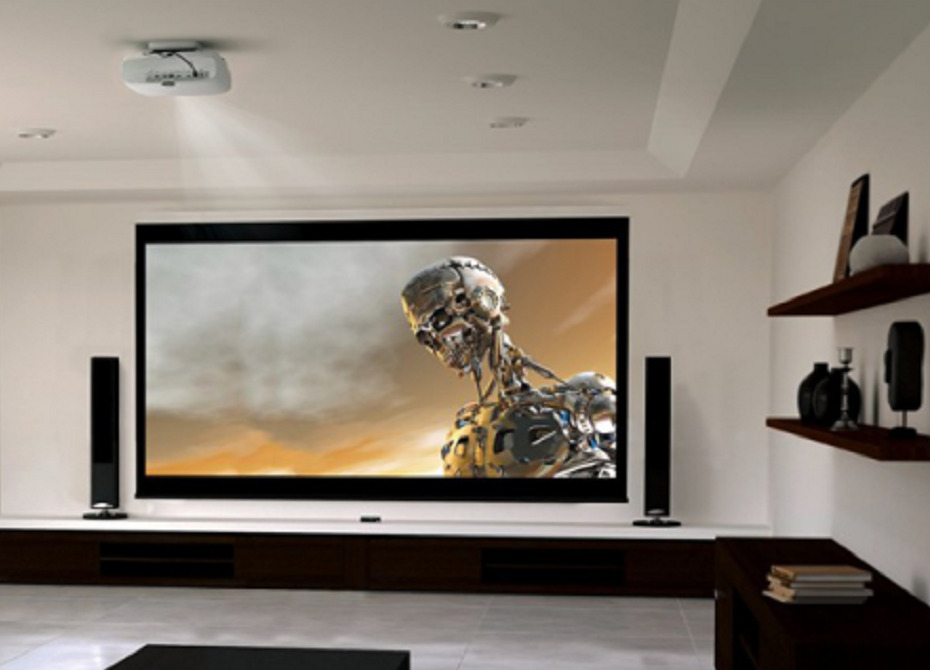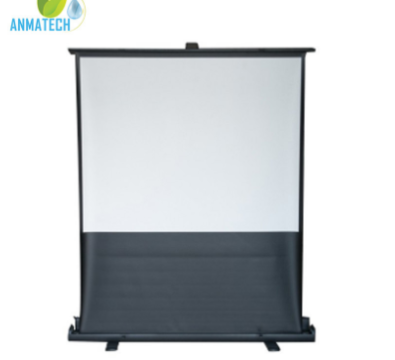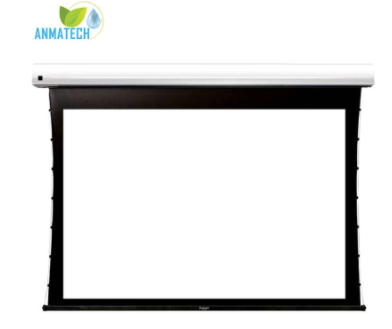In the commercial movie theaters, the projector screen is a reflective surface that may be either aluminized (for high contrast in moderate ambient light) or a white surface with small glass beads (for high brilliance under dark conditions). The screen also has hundreds of small, evenly spaced holes to allow air to and from the speakers and subwoofer, which often are directly behind it.
Rigid wall-mounted screens maintain their geometry perfectly just like the big movie screens, which makes them suitable for applications that demand exact reproduction of image geometry. Such screens are often used in home theaters, along with the pull-down screens.


Pull-down screens (also known as manual wall screens) are often used in spaces where a permanently installed screen would require too much space. These commonly use painted fabric that is rolled in the screen case when not used, making them less obtrusive when the screen is not in use.
Fixed-frame screens provide the greatest level of uniform tension on the screens surface, resulting in the optimal image quality. They are often used in home theater and professional environments where the screen does not need to be recessed into the case.
Electric screens can be wall mounted, ceiling mounted or ceiling recessed. These are often larger screens, though electric screens are available for home theater use as well. Electric screens are similar to pull-down screens, but instead of the screen being pulled down manually, an electric motor raises and lowers the screen. Electric screens are usually raised or lowered using either a remote control or wall-mounted switch, although some projectors are equipped with an interface that connects to the screen and automatically lowers the screen when the projector is switched on and raises it when the projector is switched off.

Switchable projection screens can be switched between opaque and clear. In the opaque state, projected image on the screen can be viewed from both sides. It is very good for advertising on store windows.
Mobile screens usually use either a pull-down screen on a free stand, or pull up from a weighted base. These can be used when it is impossible or impractical to mount the screen to a wall or a ceiling.
Both mobile and permanently installed pull-down screens may be of tensioned or not tensioned variety. Tensioned models attempt to keep the fabric flat and immobile, whereas the not tensioned models have the fabric of the screen hanging freely from their support structures. In the latter screens the fabric can rarely stay immobile if there are currents of air in the room, giving imperfections to the projected image.
Specialty screens may not fall into any of these categories. These include non-solid screens, inflatable screens and others. See the respective articles for more information.

